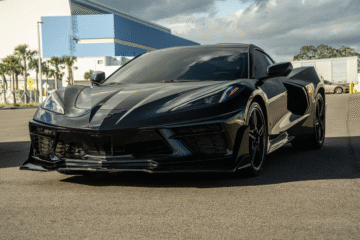Body Armor Guide For Beginners

Body armor is no longer just for soldiers on the battlefield. Today, people in various professions use body armor to stay safe. If you’re new to this topic, it can be a bit confusing. That’s why we’ve put together this beginner’s guide. We’ll explain the different types of body armor, the levels of protection they offer, and how to choose the right vest for your needs
What Is Body Armor?
Body armor is protective clothing that helps shield a person from physical attacks, such as bullets or knife slashes. While it was originally used by soldiers, today, many people wear body armor, including police officers, security guards, and even some civilians.
Body armor is divided into two main categories: soft body armor and hard body armor. Your choice depends on the type of protection you need. There are also different levels of protection against various threats. Knowing what you need protection from will help you choose the right body armor.
Body armor is protective clothing designed to absorb or deflect physical attacks that might otherwise harm the wearer. Historically, it was primarily used by soldiers in the military to protect against bullets, shrapnel, and other battlefield hazards. However, its use has expanded significantly in recent years. Today, body armor is worn by a wide range of people, including law enforcement officers, security personnel, and even ordinary citizens in certain situations. Riot police, private bodyguards, and journalists working in conflict zones are some examples of professions where body armor is commonly used. The purpose of body armor is to provide a barrier that reduces the impact of attacks, thereby increasing the wearer’s chances of survival and reducing the risk of injury.
Is It Legal to Wear Body Armor in Public?
In the United States, it’s legal for most people to buy and wear body armor. There are no background checks or ID requirements. However, some states have specific laws. For example, people with felony convictions cannot buy body armor. In Connecticut, you can’t buy body armor online; you must buy it in person.
Laws vary by country too. In Australia, you need permission to own body armor. In the UK, there are no restrictions. In Canada, you need a license, and in the EU, body armor for military use is not allowed for civilians. Always check your local laws before purchasing body armor.
The legality of wearing body armor in public varies widely depending on the country and even within regions of a country. In the United States, for example, it is generally legal for anyone to purchase and wear body armor without needing a background check or an ID. However, individual states have their own laws that may impose additional restrictions. For instance, in some states, people with felony convictions are prohibited from buying or wearing body armor. In Connecticut, the law is stricter, requiring that body armor purchases be made in person, not online.
In other parts of the world, regulations can be quite different. In Australia, the possession of
body armor is restricted, and individuals must obtain authorization to own it in certain territories.
In the UK, there are no specific restrictions on buying or owning body armor. In Canada,
individuals need a license to wear body armor, while in the European Union, body armor designed for military use is generally prohibited for civilian use. Because laws can vary so much, it is crucial to research and understand the specific regulations in your area before purchasing body armor.
Different Types of Body Armor
- Body Armor Vest: Also known as a bulletproof vest, this protects the torso from bullets and fragments from explosions. It’s commonly used by police, security guards, and some civilians. Vests come in different types for different levels of protection.
- Soft Armor Plates: These are light and flexible, often worn under clothing. They are comfortable but offer strong protection.
- Hard Armor Plates: These offer the highest level of protection but are heavier and less comfortable. They can be added to vests for extra protection.
- Concealed Vest: Worn under regular clothes, these vests are designed to be hidden while providing protection from bullets and knives.
- Full Body Tactical Armor: Used by the military, this covers the front, back, and sides of the torso, and can include protection for the head, arms, and legs. It’s worn over clothes.
- Bulletproof Military Plate Carrier: A lighter and more comfortable vest that can hold both soft and hard armor plates. Popular with military and police.
- Edge-Blade and Spike Protection: These vests protect against knives and other sharp objects. They have tightly woven fibers and multiple layers to prevent penetration.
- Multi-Threat Armor: Provides protection against various types of weapons. Useful for law enforcement who face different threats.
- Body Armor for Women: Designed to fit women better, with inserts that allow for better protection and comfort based on body shape.
There are several types of body armor, each designed to provide different levels of protection and suit various needs. Here’s a closer look at each type:
- Body Armor Vest: Often called a bulletproof or ballistic vest, this type of armor is designed to protect the torso from bullets and explosive fragments. It’s widely used by police officers, security guards, and some civilians. These vests come in various forms, offering different levels of protection based on the threats they are designed to counter.
- Soft Armor Plates: Made from flexible materials, soft armor plates are lightweight and comfortable, making them suitable for everyday wear. They are typically used in concealed vests that can be worn under regular clothing. Despite their flexibility, they provide strong protection against many types of threats.
- Hard Armor Plates: These plates are made from tougher materials like ceramic or steel, offering higher levels of protection. However, they are heavier and less comfortable than soft armor plates. They can be inserted into vests for additional protection against high-velocity projectiles.
- Concealed Vest: Designed to be worn under street clothes or uniforms, concealed vests offer discreet protection. They usually contain soft armor panels and are crafted to be invisible while still providing comprehensive protection against bullets and knives.
- Full Body Tactical Armor: This type of armor is typically used by military personnel. It includes a vest that covers the front, back, and sides of the torso, and can be paired with additional protective gear for the head, arms, and legs. Full body tactical armor is designed to be worn over clothing.
- Bulletproof Military Plate Carrier: A popular choice among military and police forces, plate carriers are lighter and more comfortable than full body armor. They can hold both soft and hard armor plates, providing versatile protection levels as needed.
- Edge-Blade and Spike Protection: These vests are specifically designed to protect against sharp objects like knives and spikes. They have tightly woven fibers and multiple layers to prevent penetration, offering an added layer of protection in situations involving close-quarter combat or attacks with sharp weapons.
- Multi-Threat Armor: Designed to provide protection against a variety of threats, multi-threat armor is particularly useful for law enforcement officers who may face different types of weapons. This type of armor can combine bulletproof and stab-proof features, ensuring comprehensive protection.
- Body Armor for Women: Traditional body armor designs have primarily catered to men, but recent advancements have led to the development of armor specifically for women. These designs take into account the unique body shapes of women, offering better fit, comfort, and protection. Features like the BarCurve insert allow for better adaptation to the female form, providing effective and comfortable protection.
Different Threat Levels
The U.S. National Institute of Justice (NIJ) has set performance levels for body armor:
- Level IIA: Basic protection, typically soft armor.
- Level II: Better protection, still usually soft armor.
- Level IIIA: Highest level of soft armor, sometimes found in hard plates.
- Level III: Hard armor plates, protection against rifle rounds.
- Level IV: Hard armor plates, protection against armor-piercing rounds.
Understanding the threat level you need protection from is crucial when choosing body armor.
The National Institute of Justice (NIJ) in the United States has established a classification system to rate the performance levels of body armor. These levels indicate the types of threats the armor can protect against. Here’s a breakdown of these levels:
- Level IIA: This level offers basic protection and is typically found in soft armor. It is designed to stop lower velocity bullets, such as those fired from handguns. This level is relatively lightweight and flexible, making it suitable for everyday wear.
- Level II: Providing better protection than Level IIA, this level can stop higher velocity handgun bullets. It is still generally soft armor and offers a good balance between protection and comfort.
- Level IIIA: This is the highest level of protection available for soft armor. It can stop most handgun rounds, including higher velocity ones. Sometimes, hard armor plates also have a Level IIIA rating, adding to their protective capabilities.
- Level III: Typically associated with hard armor plates, Level III protection is designed to stop rifle rounds. This level offers significant protection but is heavier and less comfortable than soft armor.
- Level IV: This is the highest level of protection available and is also found in hard armor plates. Level IV armor is capable of stopping armor-piercing rounds. It provides maximum protection but is the heaviest and least comfortable option.
Choosing the right level of protection depends on the specific threats you expect to face. It’s essential to understand the types of weapons and attacks you need protection from to make an informed decision about which level of body armor to use.
Body Armor Comparisons
Full Body Armor FBA IND4100:
- Can be worn concealed or as full body armor.
- Provides front, back, and optional side, neck, and body protection.
- Quick to assemble, adjustable on the move.
- Compatible with a war belt and MOLLE pouches.
The Full Body Armor FBA IND4100 is a versatile piece of equipment designed to offer comprehensive protection. It can be worn as a concealed vest under regular clothing or as full body armor for more visible and extensive protection. This vest covers the front and back of the torso and offers the option to add side, neck, and full-body protection. One of its standout features is its quick assembly time; it can be put together in less than 30 seconds, and it can be adjusted while on the move. Additionally, it is compatible with a war belt and MOLLE pouches, which allow for the attachment of various accessories and pouches, enhancing its functionality for tactical use.
Ultra-06 Plate Carrier:
- Light and comfortable with added padding.
- Holds hard armor plates for front and back protection.
- Quick to put on, not concealed.
The Ultra-06 Plate Carrier is designed with comfort and ease of use in mind. It is extremely lightweight, making it ideal for prolonged wear. The additional padding not only enhances comfort but also reduces trauma from impacts. This plate carrier is designed to hold hard armor plates, providing robust protection for the front and back. It can be assembled quickly, typically in about 15 seconds, which is crucial in high-pressure situations. However, it is not intended to be concealed and is worn over clothing, making it suitable for visible tactical operations.
Ballistic Vest BAV ESP2200:
- Lightweight and waterproof, designed for women.
- Provides high protection against bullets and stabs.
- Adjustable shoulder straps, not concealed.
The Ballistic Vest BAV ESP2200 is specifically designed for women, taking into account their unique body shapes for a better fit and comfort. It is lightweight and waterproof, making it practical for various environments. This vest offers high protection against both bullets and stab threats, ensuring comprehensive safety. It features adjustable shoulder straps, allowing for a customized fit. Although it is not designed to be concealed, its tailored fit provides effective and comfortable protection for female wearers.
Ballistic and Concealed Vest BCV CAT1300:
- High protection against multiple threats.
- Designed to be worn under clothes.
- Comfortable for both men and women.
The Ballistic and Concealed Vest BCV CAT1300 is intended to provide high protection while being worn discreetly under regular clothing. It is designed to shield against multiple threats, including bullets and stabs, making it a versatile choice for those facing various risks. This vest is suitable for both men and women, featuring inserts that enhance wearability and comfort for female users. It includes elastic shoulder straps for a snug fit and is coated with waterproof and anti-stain treatments, ensuring durability and ease of maintenance.
Plate Carrier PCA IRL3600:
- For hard and soft armor.
- Ideal for coast guard with floating collar and groin protection.
- High front, back, and side protection.
The Plate Carrier PCA IRL3600 is a highly protective and versatile piece of body armor. It is designed to hold both hard and soft armor plates, providing extensive coverage and protection. This plate carrier is particularly suitable for coast guard duty, as it includes a detachable floating collar that aids in flotation. It also has a detachable groin protection panel, adding an extra layer of safety. The carrier offers high protection for the front, back, and sides of the torso, making it a reliable choice for various high-risk situations.
Full Body Armor FBA ENG4400:
- Part of the UK Army’s VIRTUS system.
- Can be worn concealed or as full body armor.
- Quick to assemble and compatible with various accessories.
The Full Body Armor FBA ENG4400 is part of the UK Army’s advanced VIRTUS soldier system. This vest can be worn as a concealed vest with soft armor plates or as full body armor with both hard and soft plates, depending on the level of protection needed. It features a quick assembly time of less than 30 seconds and includes RAILS buckles for precise sizing adjustments. This body armor is compatible with a range of tactical accessories, enhancing its functionality. It is designed to provide front, side, and back protection, and it can be expanded with additional components like collar and upper arm protection.
Scalability: The Soldier System
The Scalable Tactical Vest (STV) allows soldiers to adapt their protection level. It starts as a concealed vest and can be upgraded to full tactical armor with added pieces for side, groin, neck, and head protection. It includes a quick-release mechanism for easy removal and is compatible with various tactical backpacks and hydration systems.
The Soldier System is a comprehensive solution designed to provide adaptable protection and equipment for soldiers. The Scalable Tactical Vest (STV) is a key component of this system, offering the ability to adjust protection levels based on mission requirements. It begins as a concealed vest, providing basic protection, but can be quickly transformed into full tactical armor by adding various protective elements. These include side panels, groin protection, neck and head armor, and more. The STV features a Vest Quick Release (VQR) mechanism that allows the vest to be removed quickly with a single pull, making it easy to take off in emergencies or for rapid reconfiguration. It is compatible with three tactical backpacks (Bergen 90L, Daysack 40L, and Assault Pack 17L), a Tactical Hydration System, and various tactical accessories, ensuring that soldiers have the necessary tools and hydration while on missions. This scalability and integration make the Soldier System a versatile and highly effective solution for modern military needs.
Summary
Different types of body armor provide different levels of protection. Before buying, check your local laws and consider the threats you need protection from. The right body armor can be life-saving, so it’s important to choose wisely.
Body armor comes in various types and protection levels, each designed to suit specific needs and threats. Before purchasing body armor, it’s crucial to research and understand the laws and regulations regarding body armor in your area, as they can vary significantly. Additionally, identifying the specific threats you need protection from will help you choose the appropriate type and level of armor. Whether you need soft armor for everyday concealed wear or hard plates for maximum protection against high-velocity projectiles, selecting the right body armor can be a critical decision that ultimately enhances your safety and survival in dangerous situations.










